The NVIDIA GeForce RTX 2070 Super & RTX 2060 Super Review: Smaller Numbers, Bigger Performance
by Ryan Smith on July 2, 2019 9:00 AM EST- Posted in
- GPUs
- GeForce
- NVIDIA
- Turing
- GeForce RTX
Power, Temperatures, & Noise
Last, but not least of course, is our look at power, temperatures, and noise levels. While a high performing card is good in its own right, an excellent card can deliver great performance while also keeping power consumption and the resulting noise levels in check.
| GeForce Video Card Voltages | |||||
| RTX 2070S Boost | RTX 2070 Boost | RTX 2060S Boost | RTX 2060 Boost | ||
| 1.043v | 1.05v | 1.043v | 1.043v | ||
Looking quickly at boost voltages, there aren’t any big surprises. Like the non-Super cards they’re based on, both of the new Super cards will max out at either 1.043v or 1.05v at their highest boost bin. In reality, these cards are typically not boosting quite so high due to TDP limits, in which case power consumption is often under a volt(a).
| GeForce Video Card Average Clockspeeds | |||||
| Game | RTX 2080 | RTX 2070S | RTX 2070 | RTX 2060S | |
| Max Boost Clock | 1900MHz | 1950MHz | 1875MHz | 1950MHz | |
| Boost Clock | 1710MHz | 1770MHz | 1620MHz | 1650MHz | |
| Tomb Raider | 1785MHz | 1875MHz | 1725MHz | 1800MHz | |
| F1 2019 | 1785MHz | 1875MHz | 1770MHz | 1815MHz | |
| Assassin's Creed | 1815MHz | 1890MHz | 1785MHz | 1860MHz | |
| Metro Exodus | 1785MHz | 1875MHz | 1725MHz | 1815MHz | |
| Strange Brigade | 1770MHz | 1875MHz | 1725MHz | 1800MHz | |
| Total War: TK | 1785MHz | 1875MHz | 1725MHz | 1815MHz | |
| The Division 2 | 1740MHz | 1845MHz | 1680MHz | 1755MHz | |
| Grand Theft Auto V | 1815MHz | 1890MHz | 1785MHz | 1860MHz | |
| Forza Horizon 4 | 1800MHz | 1890MHz | 1785MHz | 1875MHz | |
Meanwhile the average in-game clockspeeds largely echo NVIDIA’s official claims. The new Super cards tend to have higher clockspeeds, owing to their higher starting points within NVIDIA’s specifications. These higher clockspeeds allow these cards to punch a bit harder than they otherwise would, narrowing the gap with their RTX 2080/2070 analogs. The trade-off for this is that TDP becomes a very careful balancing act, as these higher clockspeeds are farther up on the voltage/frequency curve where the underlying GPUs aren’t quite as efficient.
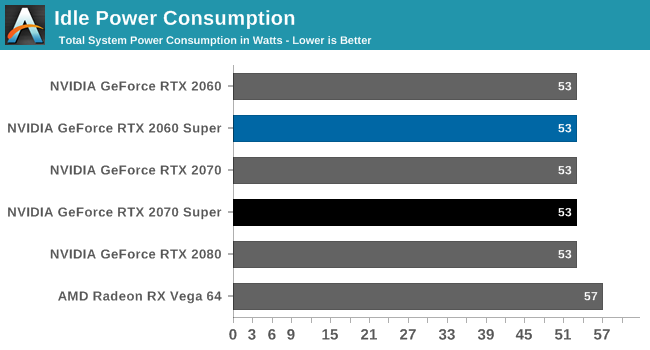
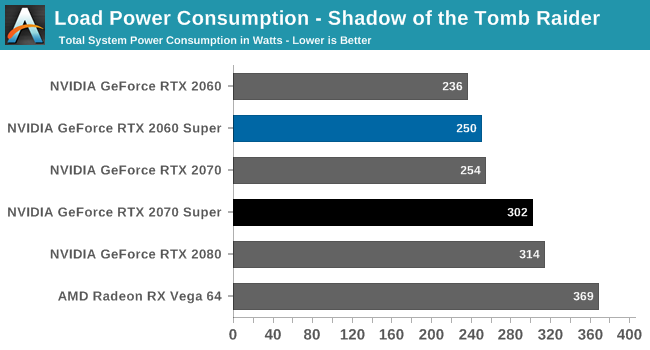
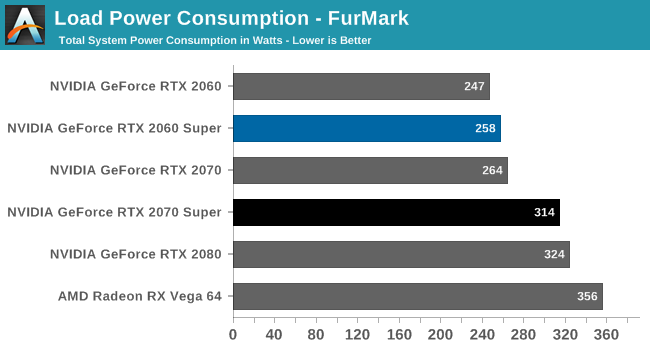
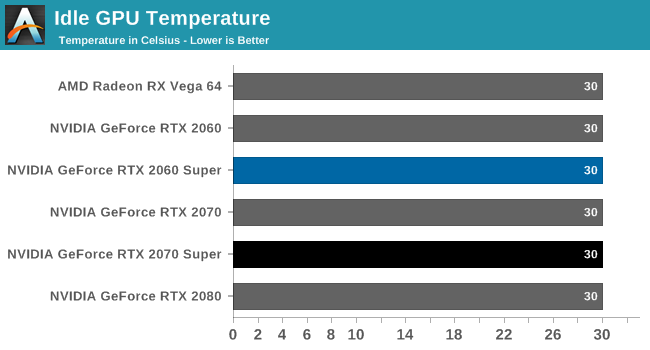
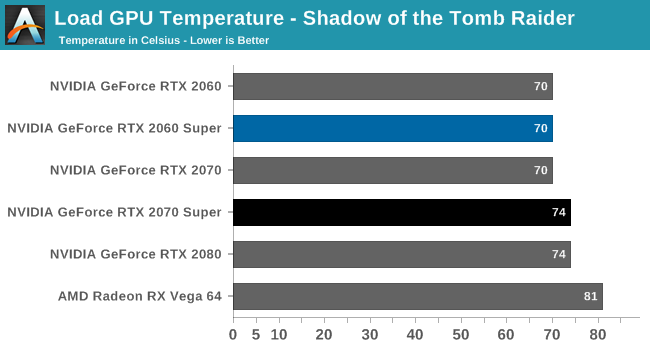
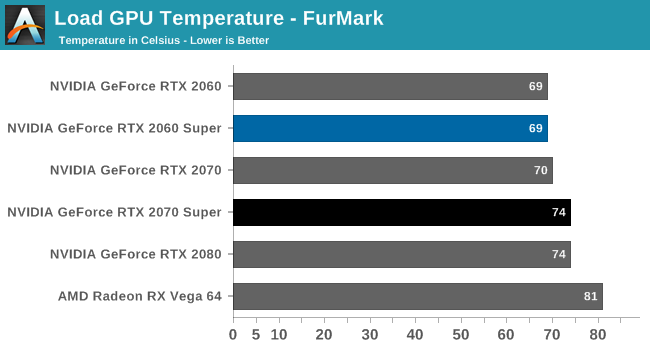
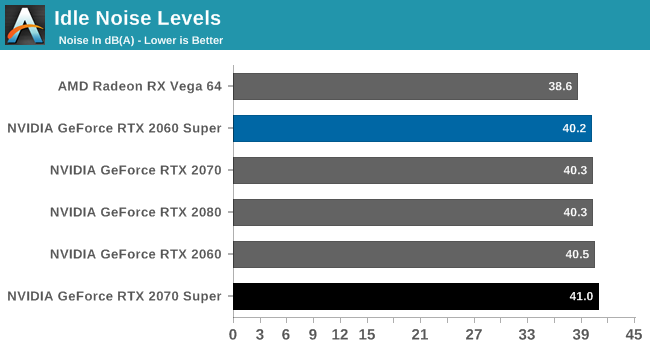
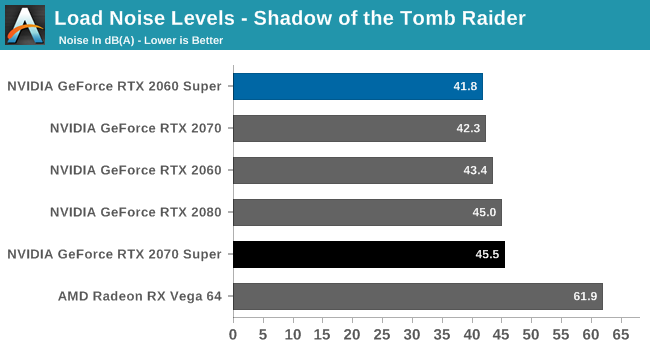
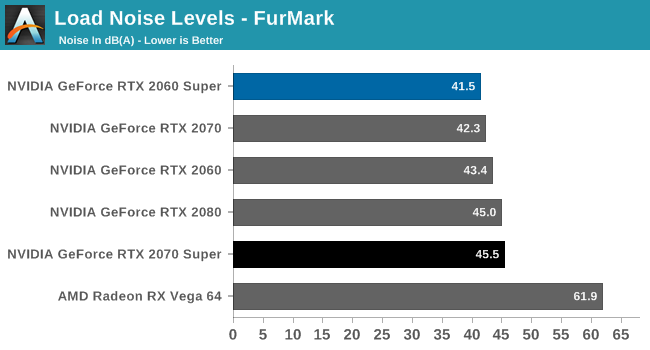










281 Comments
View All Comments
Korguz - Tuesday, July 2, 2019 - link
um yea ok.. sure...eva02langley - Tuesday, July 2, 2019 - link
Well, AMD will introduce bundles, games and rebates for Ryzen and Navi launch. I will not be surprised to see Navi cut down by 50$ in August.Fritzkier - Tuesday, July 2, 2019 - link
Navi should be cheaper IMO. Navi has way more smaller die (2.5x more smaller than Vega 64 if I recall) and uses GDDR6 instead of HBM. I don't know why AMD priced them that high tho...eva02langley - Tuesday, July 2, 2019 - link
Because Nvidia was asking for 500-600$ for less performances.Meteor2 - Saturday, July 6, 2019 - link
*was*edzieba - Tuesday, July 2, 2019 - link
"the performance, partially a consequence of going with 12nm, just isn’t there"People should have been weaned off this by now: process shrinks stopped inherently boosting performance years ago. Power consumption drops and perf/watt increases, but 'perf/transistor' continues to decrease (due to leakage increasing as packing density grows, coupled with power density increases) as it has done for some time, and cost/transistor has been going up since 28nm. A brief period of making dies bigger and bigger (and more and more expensive) has culminated in reticle-limit dies like GV100 and TU102, but that now makes start the wall process scaling hit some time ago in reality.
This is only going to continue as processes shrink further. Cost/transistor will rise, perf/transistor will drop, and increasing performance means dies will continue to grow. Performance gains will continue to come from architectural changes, not process changes. Unless you're hitting the reticle limit AND cannot split your die into multiple dies due to latency reasons only then does it make any sense to move to a smaller process, and you will take a hit to both cost/perf as well as perf/transistor in doing so which may eat any gains from packing more transistors in.
Threska - Tuesday, July 2, 2019 - link
Chiplets.Hixbot - Thursday, July 4, 2019 - link
I agree that performance per transistor can drop with die sizes due to leakage. And that new nodes are expensive at first. But once a node is mature, the cost per transistor should be lower than previous node. If that wasn't the case than the semi conductor business would be completely sunk.Hixbot - Thursday, July 4, 2019 - link
Edit: I ageee that performance per transistor can drop with process shrinksGastec - Wednesday, July 17, 2019 - link
Changes and improvements in software need to be done which are going very slowly because it takes a lot of work(coding) and knowledge but mostly hard work which younger generations are not willing to do (distracted by social networking and gaming).